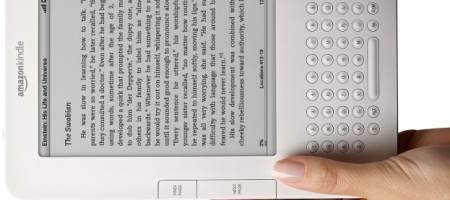The Kindle isn’t even three years old yet but it has revolutionized the world of books like no one could have expected, and has in some ways become a victim of its own success.
When the Kindle first launched on November 19, 2007, it retailed for $399. At the time, e-readers were nothing new. Sony’s e-book Reader device came out in 2006 and although it caught attention with prominent displays at Borders stores across the country, it was widely regarded as more of a concept item than something that could actually replace physical books.

The Kindle managed to attract more imagination from users, though, thanks to a much stronger marketing effort and the big advantage that Amazon had for being able to plaster it all over its website, the #1 e-commerce site in the US.
At $399, though, it was significantly more expensive than Sony’s Reader and it became the perfect “wish list” item for customers. Launching right at the holiday season helped drive sales through the roof from day one.
For a while, Amazon was sitting on cloud nine. It had a veritable stranglehold on the e-reader market. If you were a bookworm, you asked yourself, “Should I buy a Kindle or not?” Now, the question is, “Should I buy a Kindle, Nook, Kobo, or iPad?”
Just look at the price history of the Kindle. It launched at $399, later dropped to $359. The Kindle 2 launched in February 2009 to the same $359 price, then went down to $299 in the summer.
In October, though, the first player to really step up to the plate came to the forefront. Nook pre-orders opened up, and it boasted very similar functionality to the Kindle, but for only $259. Amazon’s response was almost immediate as it dropped the Kindle price to $259.
Now, fast-forward to the summer of 2010. An all-out price war erupted over e-readers after the launch of the iPad, which is stealing away e-book sales in spite of the fact that its standard LCD display causes greater eye strain than the technology used in dedicated e-reading devices.
Competition caused everyone to lower their e-reader prices, with the Nook and Kindle both going down to $199, and Borders’ Kobo being introduced to the market for $150.
Being unable to stand the fact that there was a cheaper option on the market, Barnes & Noble and Amazon gutted features from their e-readers (most notably the 3G connectivity, once a staple feature for both of them).
Now, consumers can get a Kindle for $130. That’s cheaper than any netbook or video game system. The price has finally been driven into the mass mainstream, and that’s a good thing.
Amazon really needed a kick in its pants to bring the Kindle to a wider audience. At one point it was selling the device at nearly a 100% gross margin; that is, it was selling it for more than twice what it actually cost to make it. Unfortunately, its market share is sinking too.
Bottom line, though, is that this is exactly what needed to happen to make e-readers fully legitimate, and the summer price war of 2010 should go down as the moment where the digitalization of books was officially underway.






